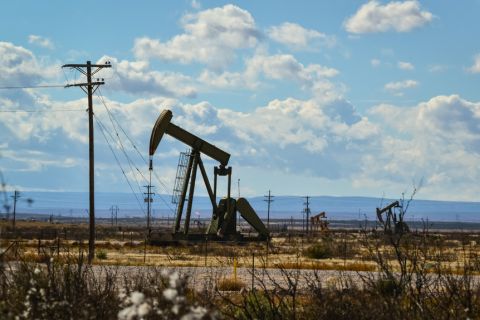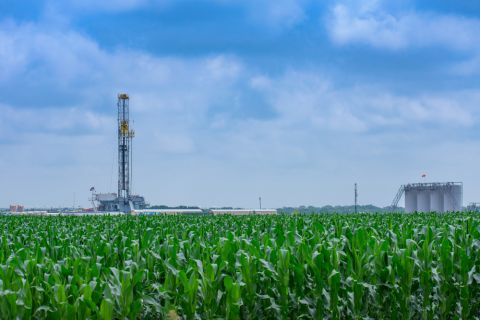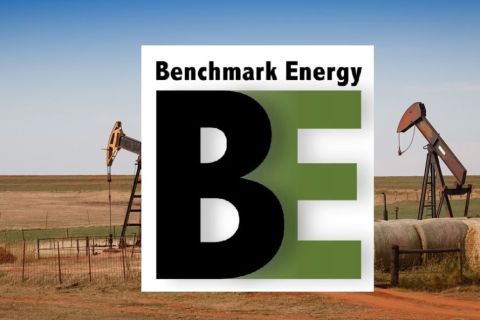
Can Haynesville, Permian and Eagle Ford E&Ps meet skyrocketing gas demand to serve a host of new LNG projects on the Gulf Coast? These executives have concerns. (Source: Shutterstock)
U.S. exports of LNG could more than double in just the next few years. Producers wonder: where is all that gas going to come from?
“I think it’s going to be very location-specific,” said Chris Valdez, CEO of Rockies-focused gas producer PureWest Energy, at Hart Energy’s America’s Natural Gas Conference on Sept. 27.
Gas demand to fuel U.S. LNG exports is forecasted to grow by 17.4 Bcf/d between 2023 and 2030, according to data from East Daley Analytics. Total peak LNG export capacity in 2022 was about 13.9 Bcf/d, U.S. Energy Information Administration data show.
The growth in demand is coming from more than a dozen new U.S. LNG export projects—most of which are being developed along the Gulf Coast.
But to export more LNG from the Gulf Coast, you’ve got to get more natural gas to the LNG plants for liquefaction. And there are questions about whether U.S. gas supply, hampered in some regions by regulatory red tape, can meet the growing demand.
“What’s sustainable and where is all this gas going to come from?” said Alan Smith, co-founder, president and CEO of Haynesville-focused E&P Rockcliff Energy.
Some of the most cost-competitive gas is being produced in Appalachia, like in the gassy Marcellus Shale and in the Permian Basin, which is spitting out large volumes of gas associated with drilling oil wells.
But a lot of the gas produced in Appalachia is stuck in-basin because there isn’t enough pipeline capacity to carry it to demand centers in other states.
It’s quite difficult to build a new interstate pipeline these days. Mountain Valley Pipeline recently required an act of Congress in order to move forward toward completion.
Houston-based Encino Energy produces about 700 MMcf/d of dry gas from its position in the Ohio Utica Shale, said Encino President and CEO Hardy Murchison. That figure could grow if Encino had access to greater takeaway capacity.
“We could double that in a year pretty easily and we could sustain that level for easily another decade,” Murchison said. “But half that gas would stay in-basin because there’s just not incremental pipe capacity available.”
RELATED
McKinsey: Shale Poised for Big Role in Long-term LNG Demand
Measuring the runway
With regulatory and legal concerns slowing new pipeline projects out of Appalachia, experts think gassy plays in Texas and Louisiana could provide a considerable amount of the incremental gas needed to meet growing LNG demand on the Gulf Coast.
Large volumes of gas going for liquefaction and export are expected to come from the Permian Basin in West Texas and New Mexico, as well as the more mature Eagle Ford Shale in South Texas, according to East Daley Analytics data.
The largest volumes supplying LNG projects are expected to be produced from the Haynesville Shale along the Texas-Louisiana border. But to get that much incremental gas out of the ground, Haynesville drilling activity would need to increase drastically to meet future demand, Smith said.
“We’ve got 30 to 40 years of inventory if you just had one rig,” Smith said. “But if all of a sudden you’re running 12, you would be tapping deep into the Haynesville inventory.”
As core Haynesville drilling locations become depleted, operators will need to drill wells in fringier, less economic locations to produce gas to supply LNG demand. That could lead to major cost increases to produce U.S. LNG—and that could make U.S. LNG much less competitive in the global LNG marketplace, according to analysis by McKinsey & Co.
“To get the amount of gas that we’re going to need, that’s why you’re seeing these projections of $4/MMBtu and $5/MMBtu gas,” Smith said.
A McKinsey survey of LNG buyers, which accounted for more than 70% of the global LNG market, found that buyers see U.S. LNG as one of the most cost-competitive sources of supply worldwide. But that market competitiveness could be eroded if issues around pipeline takeaway constraints, supply chain tightness and commercial financing aren’t addressed, McKinsey Partner Dumitru Dediu said.
RELATED
Recommended Reading
Novo II Reloads, Aims for Delaware Deals After $1.5B Exit Last Year
2024-04-24 - After Novo I sold its Delaware Basin position for $1.5 billion last year, Novo Oil & Gas II is reloading with EnCap backing and aiming for more Delaware deals.
Enverus: 1Q Upstream Deals Hit $51B, but Consolidation is Slowing
2024-04-23 - Oil and gas dealmaking continued at a high clip in the first quarter, especially in the Permian Basin. But a thinning list of potential takeout targets, and an invigorated Federal Trade Commission, are chilling the red-hot M&A market.
EIA: Permian, Bakken Associated Gas Growth Pressures NatGas Producers
2024-04-18 - Near-record associated gas volumes from U.S. oil basins continue to put pressure on dry gas producers, which are curtailing output and cutting rigs.
Benchmark Closes Anadarko Deal, Hunts for More M&A
2024-04-17 - Benchmark Energy II closed a $145 million acquisition of western Anadarko Basin assets—and the company is hunting for more low-decline, mature assets to acquire.
‘Monster’ Gas: Aethon’s 16,000-foot Dive in Haynesville West
2024-04-09 - Aethon Energy’s COO described challenges in the far western Haynesville stepout, while other operators opened their books on the latest in the legacy Haynesville at Hart Energy’s DUG GAS+ Conference and Expo in Shreveport, Louisiana.





